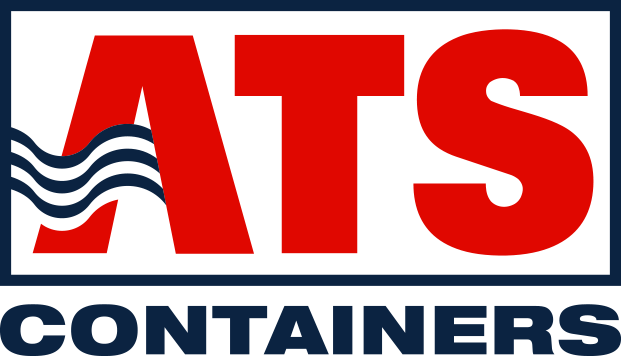Thinking About Shipping Containers in Canada? Here’s What You Need to Know
Whether you’re looking to buy, rent, or modify a shipping container in Canada, understanding the different types available can help you make the right investment. Shipping containers—often called sea cans in Canada—are used for a wide range of purposes, from storage and transportation to construction and pop-up retail spaces. But with various sizes, features, and conditions, choosing the right one isn’t always straightforward.
This guide will walk you through the most common types of shipping containers, pricing trends across Canada, and practical tips to help you decide which container suits your needs—whether you’re located in Toronto, Vancouver, Calgary, or anywhere in between.
Common Shipping Container Types in Canada
In Canada, the majority of containers come in standard 20-foot and 40-foot sizes, though you’ll also find high-cube and specialized options. Here are the 12 most commonly used container types:
1. Standard Dry Containers – These are the most widely used containers for storing general cargo, furniture, tools, and materials. They’re durable, weather-resistant, and easily stackable.
Available sizes: 10ft, 20ft, 40ft. Best for: General storage, shipping, and modification projects.
2. High-Cube Containers – One foot taller than standard containers, offering more vertical space.
Common sizes: 40ft, 45ft. Ideal for: Oversized equipment, furniture, or office conversions.
3. Reefer (Refrigerated) Containers – These containers are built with refrigeration units to transport temperature-sensitive items like food, pharmaceuticals, or flowers.
Used for: Cold storage and temperature-controlled shipping.
4. Double-Door Containers – With doors at both ends, these provide easy access and quick loading/unloading.
Best for: Construction sites, modular builds, or jobs requiring frequent access.
5. Open-Top Containers – These come with removable tarps, allowing you to load cargo from above.
Used for: Tall machinery, logs, and other oversized items.
6. Pallet-Wide Containers – Slightly wider to accommodate North American or European pallets side-by-side.
Sizes: 20ft, 40ft. Benefit: More efficient pallet loading.
7. Flat Rack Containers – With collapsible or no sides, these are ideal for large or irregular loads.
Best for: Vehicles, industrial equipment, and large materials.
8. Side-Door Containers – Offer side access in addition to the usual end doors.
Ideal for: Awkwardly shaped goods or when flexible access is needed.
9. Hard-Top Containers – Feature a removable steel roof for overhead loading and added durability.
10. ISO Tank Containers – Used to transport bulk liquids, such as chemicals or wine, and comply with international standards.
11. Insulated Containers – Unlike reefers, these don’t cool actively but help maintain a steady internal temperature for short-distance shipping.
12. Flexitanks – Large bladders placed inside 20ft containers for shipping non-hazardous liquids like oils and juices.
Understanding Shipping Container Grades in Canada
The condition of a container greatly affects its price and intended use. In Canada, you’ll typically find these classifications:
• New (One-Trip): Used only once; like-new condition, great for high-end modifications.
• Cargo-Worthy (CW): Structurally sound and suitable for international transport, though may have cosmetic flaws.
• Wind and Watertight (WWT): Excellent for stationary storage but not certified for sea transport.
• As-Is: Damaged or older containers—cheap, but best used for parts or DIY projects.
What Affects Shipping Container Prices in Canada?
Several factors influence the price of a shipping container:
• Size: Larger containers (like 40ft) are typically more expensive than 20ft units.
• Condition: New containers can cost twice as much—or more—than used ones.
• Location: Availability affects price; containers in Toronto or Montreal may cost more or less than in smaller markets.
• Special Features: Add-ons like refrigeration units, side doors, or high-cube designs increase the price.
Tip: Try searching “sea cans for sale near me” to find local dealers or online platforms with real-time pricing and inventory.
How to Buy a Shipping Container in Canada
There are several ways to purchase a container:
• Local Dealers: Reliable service with faster delivery.
• Online Marketplaces: Convenient browsing and comparisons.
• Private Sellers: Often cheaper, but you should inspect containers carefully before buying.
Always ask about delivery costs, the condition of the container, and whether it comes with a warranty or inspection report.
FAQs: Shipping Containers in Canada
Q: What is the average cost of a 20ft shipping container in Canada?
A: Expect to pay between $2,000 and $4,000 CAD depending on condition and location.
Q: Is there a difference between a sea can and a shipping container?
A: No—they’re the same. “Sea can” is just a more common term, especially in Western Canada.
Q: Can I convert a container into a home or office?
A: Yes! Many Canadians have turned shipping containers into cabins, retail spaces, or offices. Just be sure to check local zoning laws and building codes first.
Still have questions about shipping container pricing or types in Canada? We’re here to help. Whether you’re looking for one container or ten, we’ll guide you every step of the way to make the right investment.


